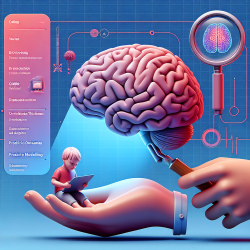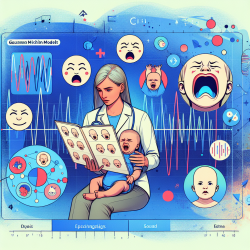Introduction
Alzheimer's Disease (AD) is a complex neurodegenerative disorder that affects millions worldwide, leading to cognitive and behavioral decline. Recent research has shed light on how brain cortical thickness can predict multiple, non-pairwise-correlated outcomes in AD. This breakthrough could revolutionize how we approach therapy and intervention, especially in educational settings for children who may benefit from early intervention strategies.
The Power of Residual Partial Least Squares Learning
The study titled "Residual Partial Least Squares Learning: Brain Cortical Thickness Simultaneously Predicts Eight Non-pairwise-correlated Behavioural and Disease Outcomes in Alzheimer’s Disease" introduces a novel method called Residual Partial Least Squares Learning (re-PLS). This method leverages multivariate brain data to predict various cognitive and behavioral outcomes in AD, offering a more comprehensive understanding of the disease's progression.
Key Findings and Implications
- Multivariate Outcome Prediction: The re-PLS method can simultaneously predict multiple outcomes, providing a holistic view of AD's impact on cognitive and behavioral domains.
- Identification of Brain Regions: The study identifies specific brain regions, such as the temporal, frontal, sensorimotor, and cingulate areas, whose cortical thickness changes are predictive of AD outcomes.
- Control for Confounding Variables: The method effectively controls for variables like age and gender, ensuring accurate predictions.
- Longitudinal Assessment: The ability to predict disease progression over time can aid in early intervention and management strategies.
Applications in Speech Language Pathology
For practitioners in speech language pathology, these findings offer exciting possibilities. By understanding the predictive markers of AD, therapists can tailor interventions to address specific cognitive and behavioral challenges. This data-driven approach ensures that therapy is not only effective but also personalized to each child's unique needs.
Encouraging Further Research
While the re-PLS method shows promise, further research is needed to explore its applications in different populations, including children with developmental disorders. By expanding our understanding of how cortical thickness impacts various outcomes, we can enhance therapeutic approaches and improve long-term outcomes for children.
Conclusion
The integration of advanced predictive modeling techniques like re-PLS in therapeutic settings holds the potential to transform how we approach AD and related cognitive disorders. By harnessing the power of brain cortical thickness data, we can make informed, data-driven decisions that lead to better outcomes for children and adults alike.
To read the original research paper, please follow this link: Residual Partial Least Squares Learning: Brain Cortical Thickness Simultaneously Predicts Eight Non-pairwise-correlated Behavioural and Disease Outcomes in Alzheimer’s Disease.










